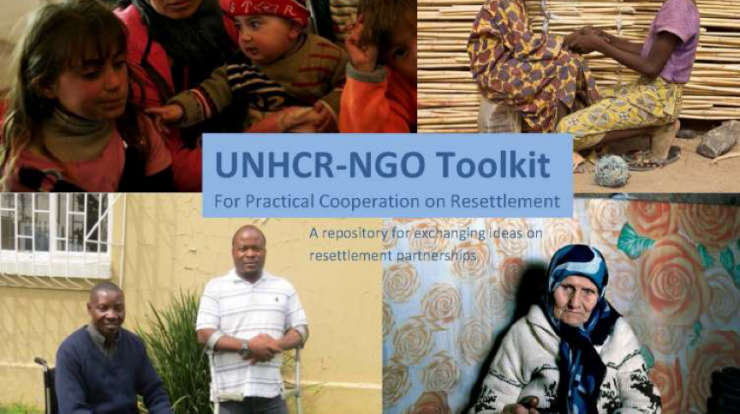An unprecedented level of demand from developing countries has seen INGOs become bigger alongside accusations that they are spending more and more on administration and salaries, and are also facing allegations of corruption and lavish spending. Public opinion suggests that a lack of governance and transparency have tarnished the reputation of INGOs, resulting in diminishing public confidence which is affecting their ability to deliver necessary overseas support.
Following the many documented scandals involving NGO employees relating to sexual activities and corruption which have affected INGOS in recent years (including the recent sexual misconduct scandal in 2011 by Oxfam workers assigned to disaster relief Haiti), the debate as to whether the “INGO humanitarian effort is failing” has been discussed at length. There is no doubt that INGO commitment to support programs in developing countries is well documented and has grown at an ever increasing rate over the years. Governments and the public have been encouraged to make donation after donation to assist a wide variety of programmes from disaster relief to health and education. Witness the growth spurt in non-governmental organizations (NGOs) and you would think that the world has become a more caring place.
The concept of organized charities is relatively recent and goes back just over 100 years, initially being sponsored by mainly religious organizations. The term non-governmental organization is more recent, dating to the formation of the United Nations in 1945 when a select group of international non-state agencies were awarded observer status to some of its meetings.
These NGOs were neither government agency nor businesses, but had an objective to work for a social good, both in terms or raising living standards, health and education, but also responding to a country crisis to assist with economic and social recovery.(1)
It is well documented since the first NGOs were formed that there has been an explosion of NGOs as governments became less involved in funding and managing programs for social change. NGOs became the conduit to funnel aid to developing nations as a less expensive option to deliver overseas aid. At the same time these NGOs tapped into a postwar wave of public support for those countries termed as Third World or underprivileged. Between 1975 and 1985 the amount of aid channeled through NGOs went up by 1,400 per cent. (2)
Arundhati Roy, well-known Indian author and activist, describes the transformation achieved: “Armed with their billions, these NGOs have waded into the world, turning potential revolutionaries into salaried activists, funding artists, intellectuals and filmmakers, gently luring them away from radical confrontation.” (3) Today, thirty new NGOs are formed every day in Britain and there are 1.5 million in the US alone (4). Ninety percent of currently existing NGOs have been launched since 1975 (5).

Interviews were held with local NGOs from UK, Nepal and the Philippines as to their concerns regarding INGOs ability to deliver project results with the required integrity and transparency.
An interview with a local Nepal NGO involved in Human trafficking, when asked about the effectiveness of INGOs working in Nepal, commented that: “As a local NGO we can ensure 90% of funding goes directly to beneficiaries. A small amount of money goes a long way in Nepal. We have the benefit of being able to operate with a small number of local staff who ensure our projects are integrated within the community. We often observe large INGOs spending on team building and staff welfare, including expensive hotels or trips. We have also observed that money is sometimes distributed to local NGOs with little accountability, resulting in corruption that often start with inflated salaries and Board members fees.
In my view, INGOs should ensure strict accountability when spending donor money. This could include using local resources and making sure communities have a stake in local projects, ensuring all stakeholders want to make the project a success. For example, it has recently been reported that the Musahars, a Dilat community of labourers from the Tarai, are deprived of healthcare jobs as well as other government services.”
NGOs such as DFID and UKAID spend millions on supporting Dalit communities, but according to the “Nepal National Musahar Association” they have not benefitted as they should and are being cheated by some INGOs who are supposed to have establish centres to provide skills training and life skills. However, the programmes are not properly managed and it has been reported that training only lasts for one day each month and participants are then required to sign that they have attended a whole month course. A spokesman said, “The programmes are just an easy source of money for officials” and further stated that “no Musahars are involved in managing the programmes.”
An interview with a local Philippine NGO involved with street children said that whilst they were trying to increase funding through the expansion of their social enterprises, International NGOs had been very supportive and assisted them both financially and with expertise to support programmes that aid children getting off the street and attend educational classes, whilst also giving older children opportunities to work. They further added that while they welcomed international support, they would retain complete control of how the money is spent and the direction of the charity.
The Rise and failure of INGOs
NGOs have developed into a major world economic force, distributing billions of dollars through organisations with budgets of hundreds of millions of dollars, employing thousands of people who now believe that they are force, striving tirelessly to improve living standards and deliver social justice.
In recent times INGOs have come under huge criticism as public fundraising and Government grants fuel increasing bureaucracy, operating expenses and providing incomes similar to that found in the private sector. Their spending has come under increased public scrutiny and it has been estimated that only 10-15% of the allocated funds reach people in need, while most of it goes towards the maintenance of these NGO organisations and the running expenditures of paid employees and volunteer workers. Critics claim that NGOs with such huge funds at their disposal are completely divorced from the countries in which they operate. Analysts believe that less than 2% of all humanitarian funding goes directly to local NGOs, and according to aid insiders: “this is despite them taking the lion’s share of the risk and often being better placed to deliver.” Recent research suggests that Non-Governmental Organisations (NGOs) from donor countries do not provide better targeted or more efficient aid than state-run development agencies. Local NGOs are often believed to provide well-targeted aid.
A UK consultant with fifteen years of experience in advising NGOs on implementing financial and compliance procedures was asked about his experience in the effectiveness of NGOs as business units that could deliver programs on a cost-effective basis. He commented that: “NGOs face immense challenges with limited resources, heavy administration and management fees and they are caught on a treadmill, putting forward worthwhile projects which catch public imagination, raising funds and delivering to meet donor expectations, while faced with increasing costs to manage the process.” He further said that “NGOs need to see themselves as a business and deal with market forces through innovation and adaptation. They need to emulate the formal management philosophies like lean management and Six Sigma to improve productivity, target business outcomes and make decisions with good board governance.” From his experience, small NGO’s have the survival instincts and can deliver. Smaller micro managed NGO’s that focus on project delivery work best with local NGOs having the knowledge to deliver. The bigger they are, the more compliance costs, corporate governance and more empire building.
Stephen O’Brien, the head of United Nations humanitarian affairs, told a conference in Switzerland that aid delivered by local agencies was often faster, cheaper and more “culturally appropriate”.
“What we need now is a global approach,” said Sean Lowrie, of the Start Network, which brings together international and national NGOs for humanitarian response. Its members include :Save the Children, Oxfam and Christian AID. Lowrie went on to state that the current model was not working. “We’re still working in an old-fashioned, centralised, top-down system, which believes in the fallacy of control. We’re stuck and we’re not talking about the real issue, which are incentives, behaviour and governance. What we need is a whole new eco-system of smart humanitarianism, which responds to what is needed, which is flexible and diversified, and which is financed in new, smart ways.”
Current research suggests that unless radical changes are made the way aid is delivered by INGOs public support for aid programs will continue to decline.
References
- Dinyar Godrej,”NGOs do they help” New Internationalist December 2014.
- Ji Giles Ungpakorn, ‘NGOs: enemies or allies?’, International Socialism, October 2004
- In ‘Capitalism: A Ghost Story’, Outlook, 26 March 2012
- Paul Vallely, ‘Giving to charity: Are we getting as good as we give?’, The Independent, 10 September 2014; and Wikipedia.
- Dhananjayan Sriskandarajah, ‘NGOs losing the war against poverty and climate change, says Civicus head’, The Guardian, 11 August 2014.

